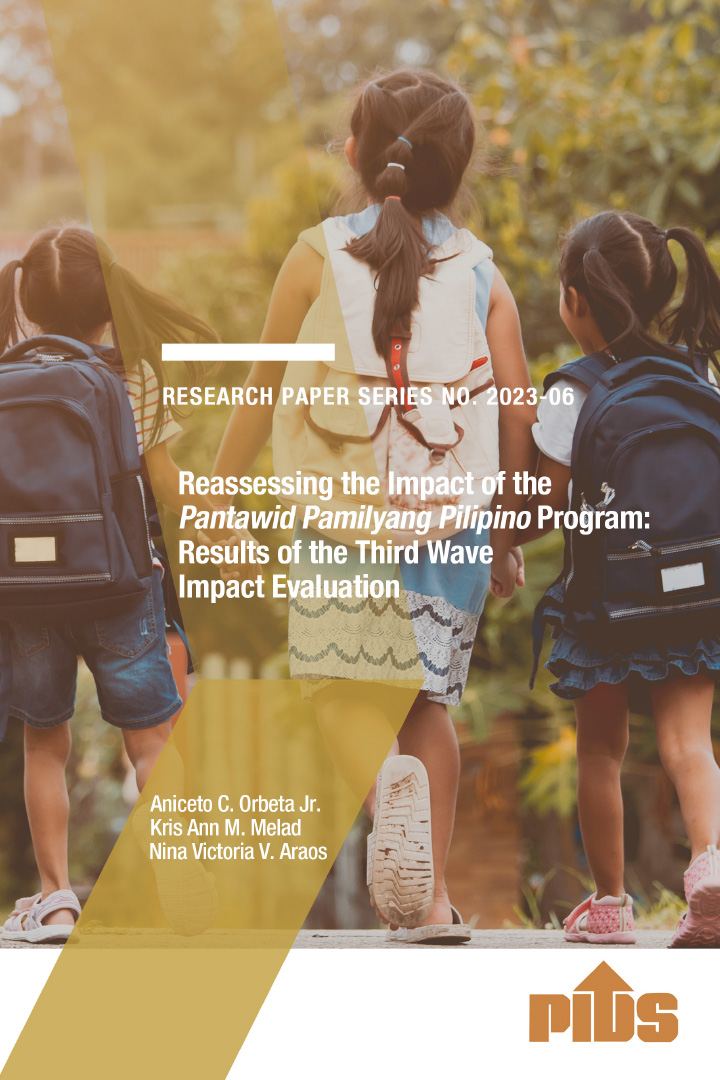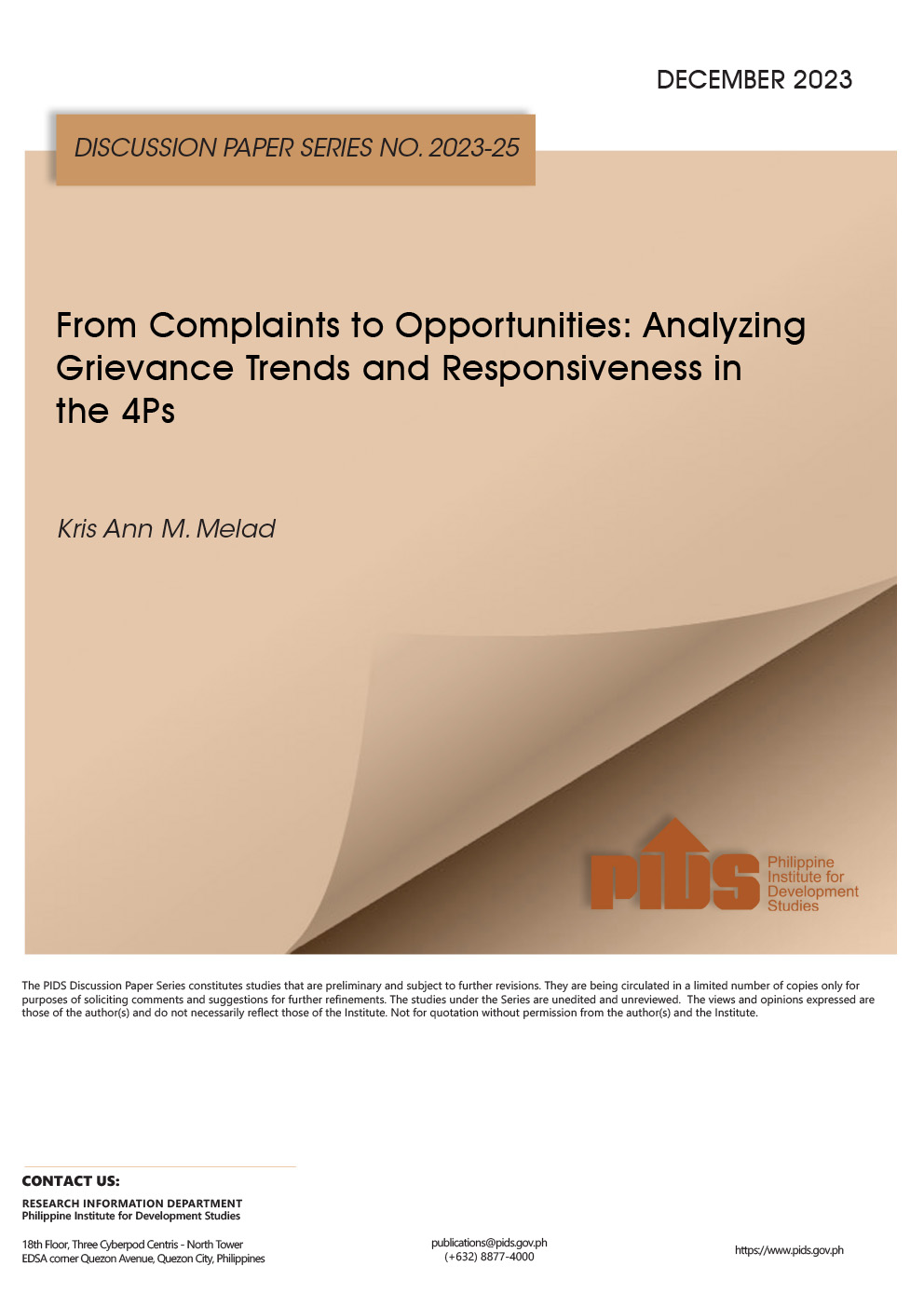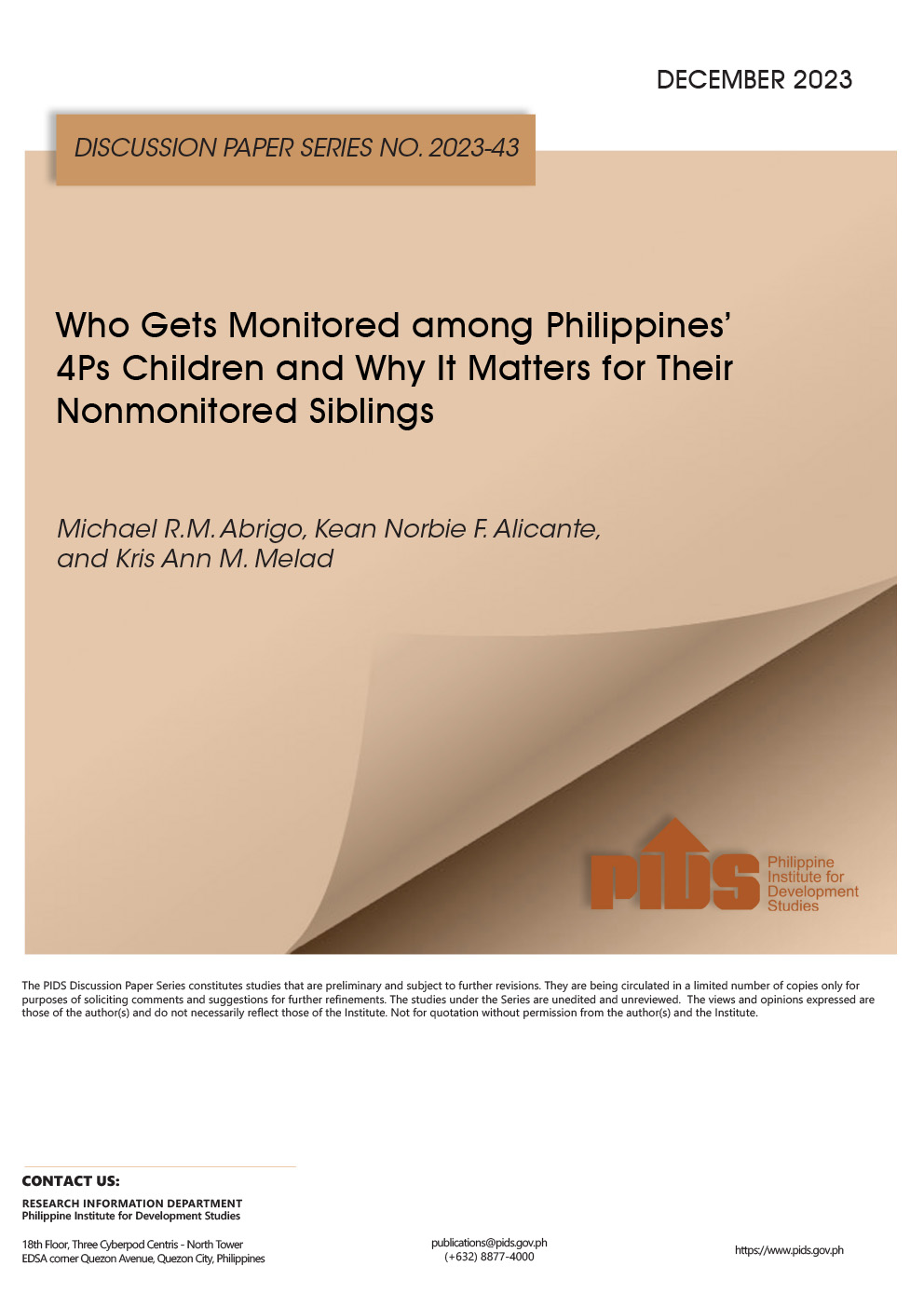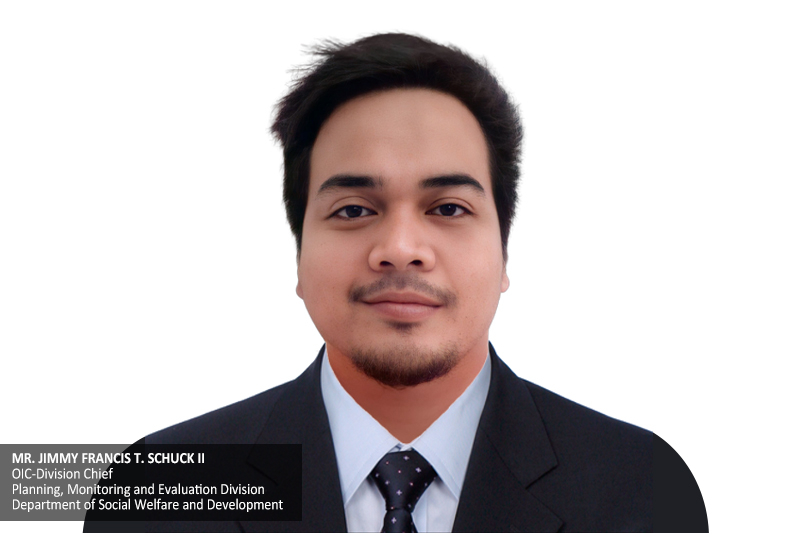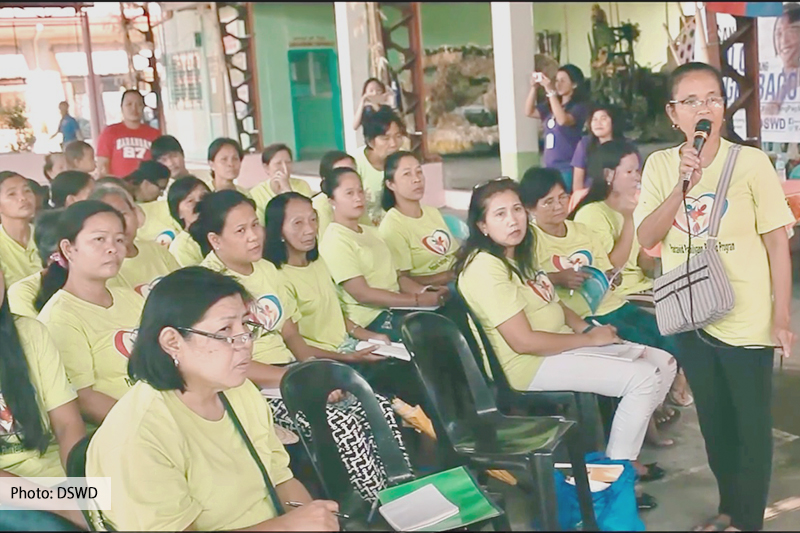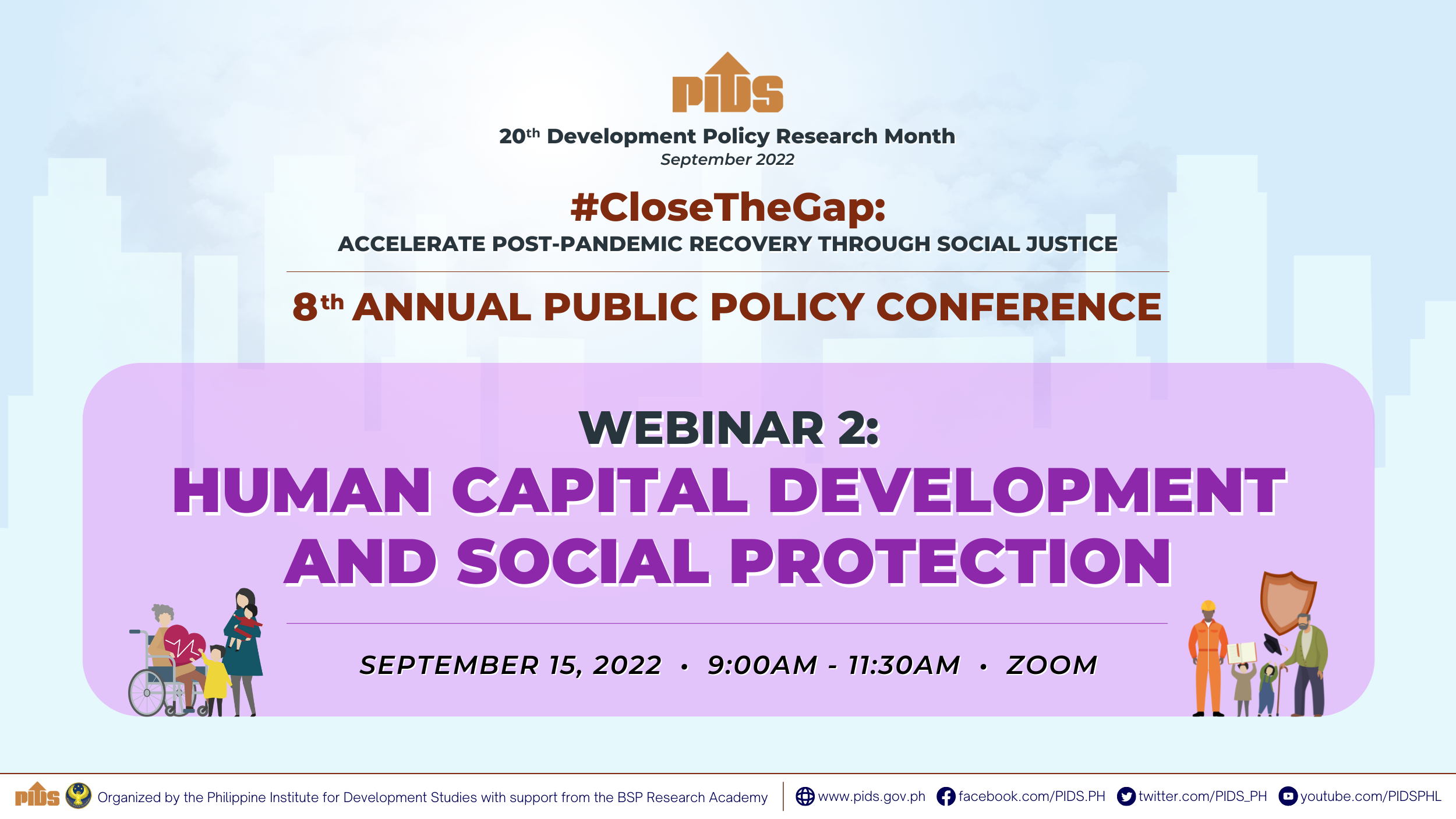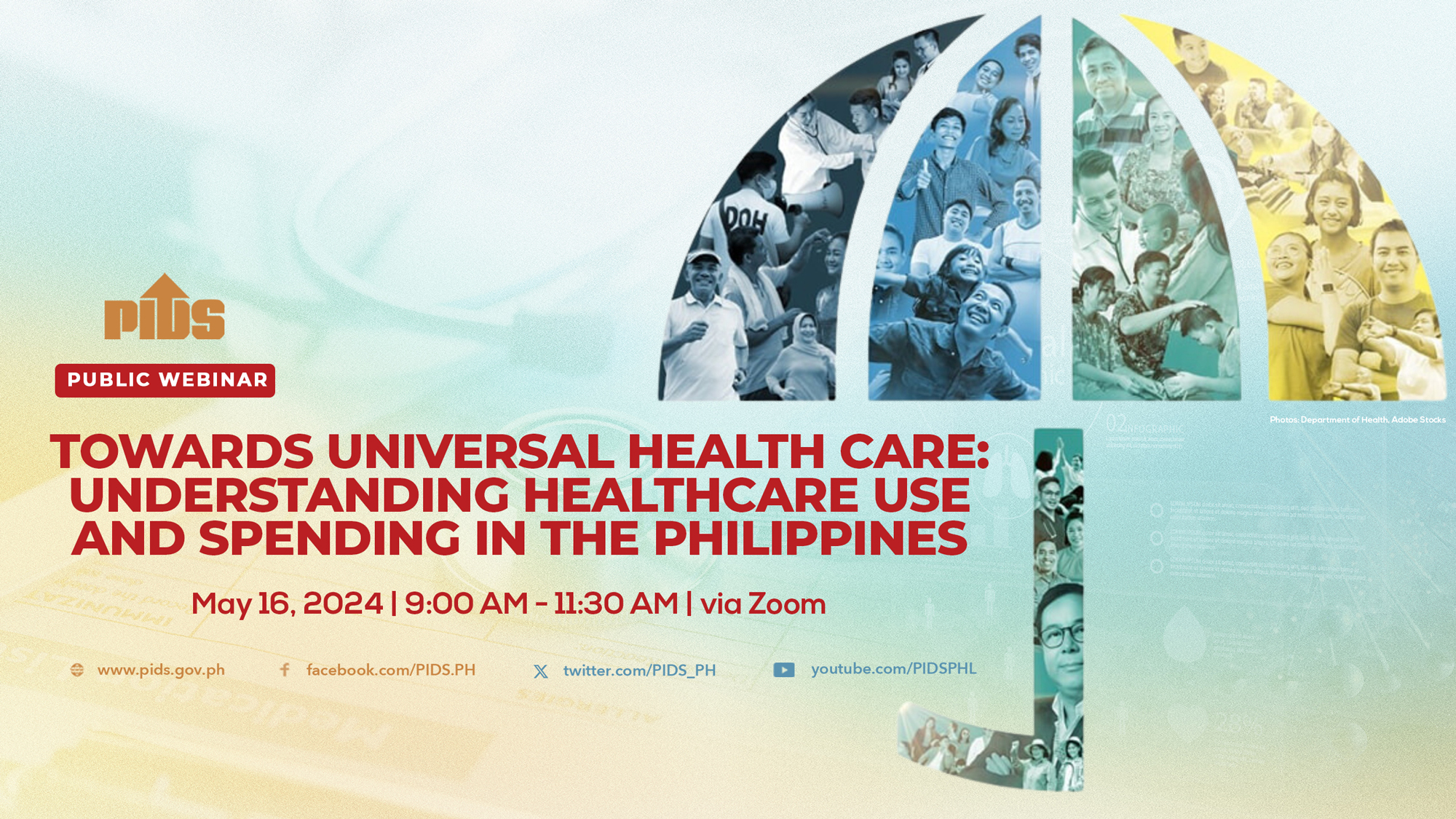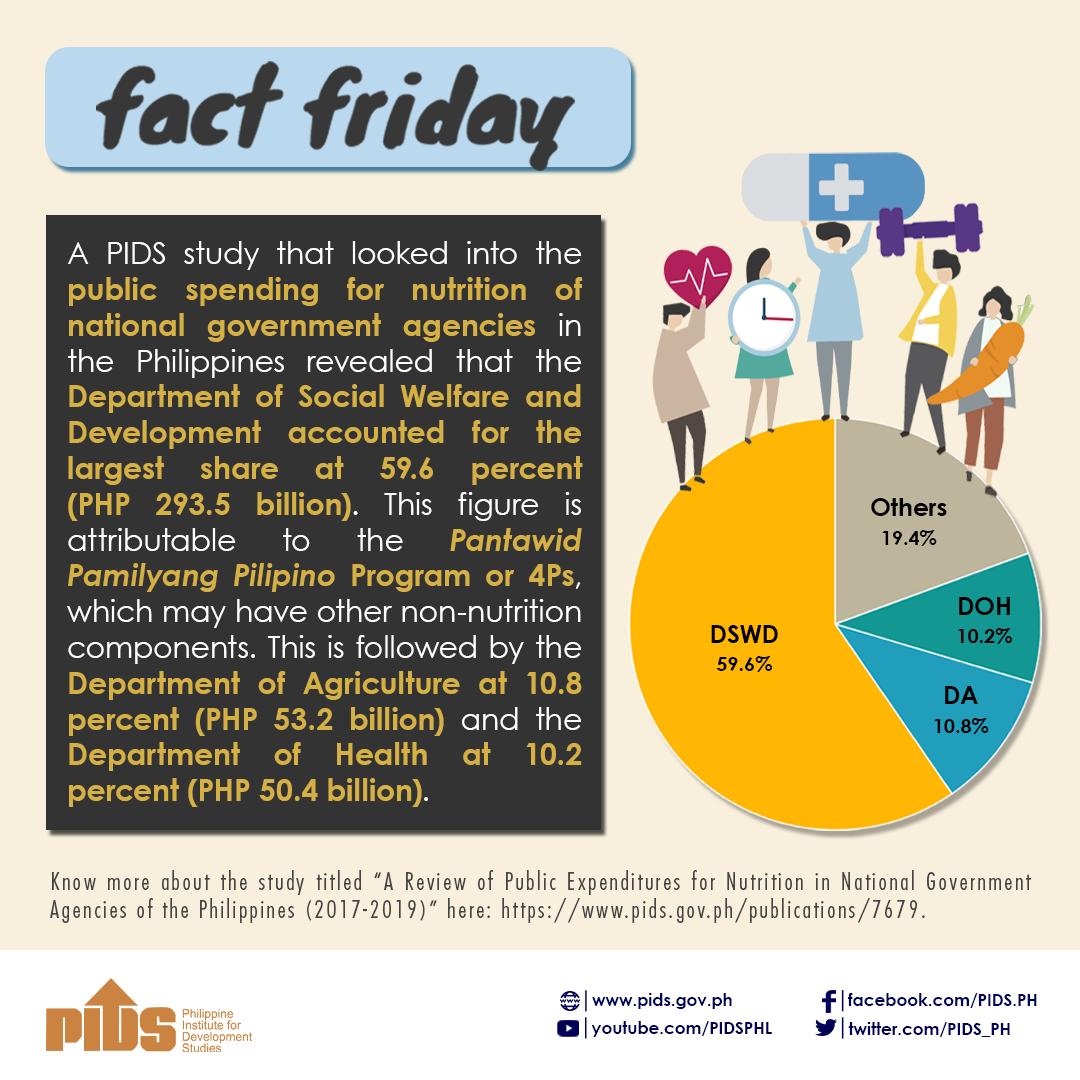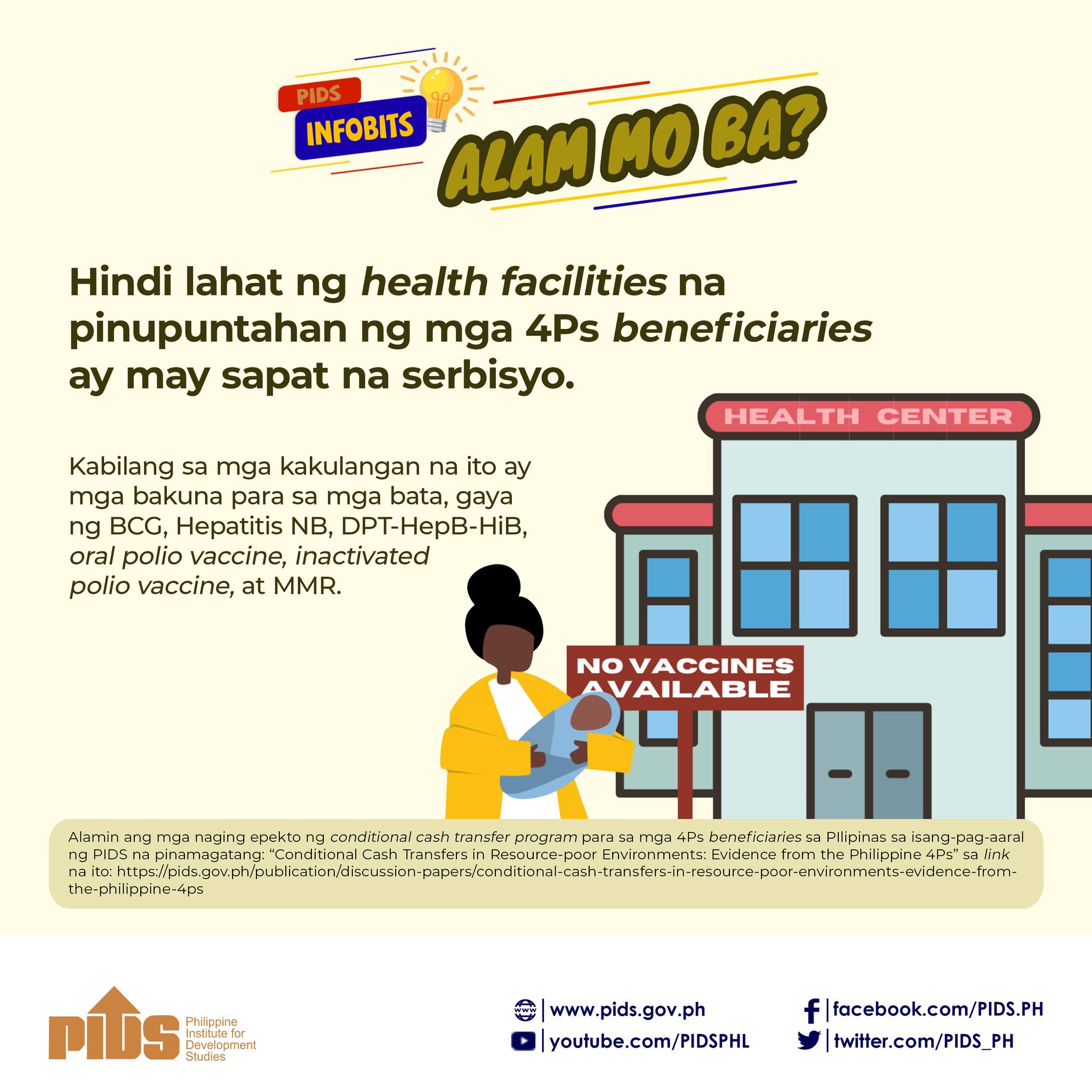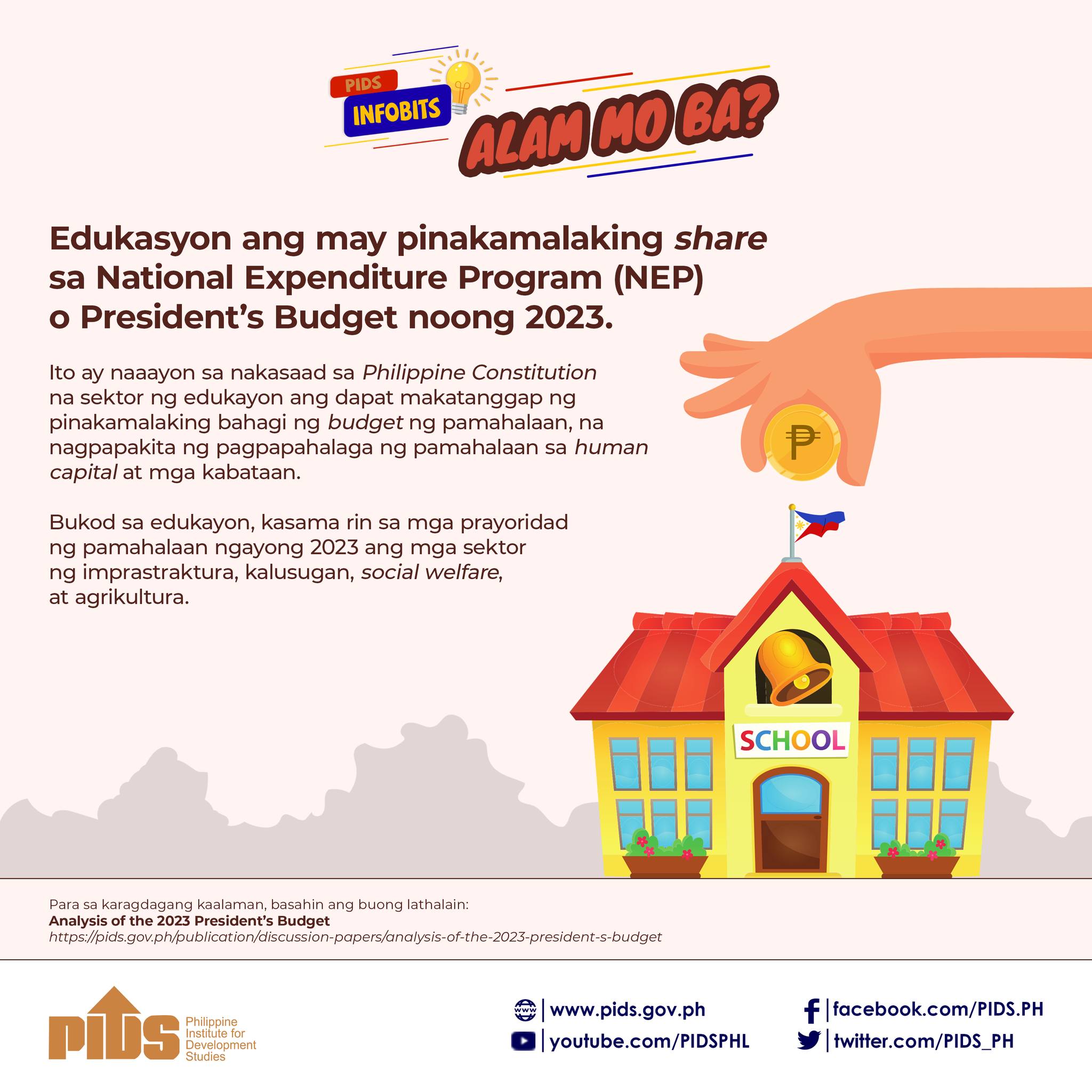Supply-side healthcare and education limitations may undermine the impact of the Pantawid Pamilyang Pilipino Program (4Ps), the Philippine government's flagship social protection program. Addressing these supply availability and quality gaps is therefore paramount.
These were highlighted at a recent public webinar by the Philippine Institute for Development Studies (PIDS), which examined the impacts of the 4Ps. It featured two studies co-authored and presented by PIDS Senior Research Fellow Michael R.M. Abrigo.
The studies confirmed that supply-side conditions have an important bearing on education- and health-seeking behaviors among households. What is good is that conditional cash transfers may alleviate the negative influence of some supply-side limitations. Findings also show that 4Ps raise school enrollment on average, driven by its impact on boys and older children. The negative effects on nonmonitored children worsen with age and are more severe for boys, an observation that appears to be universal across households.
Abrigo emphasized that while the program has successfully incentivized families to engage with essential services, the quality of these services may suffer due to accessibility issues and resource constraints. The 4Ps has had positive impacts, such as increased prenatal visits, child health service utilization, and educational investment. However, ensuring access to high-quality services remains a major challenge, particularly for geographically disadvantaged beneficiaries.
“Based on our observations, schools with a higher proportion of 4Ps beneficiaries tend to have higher student-teacher ratios and a lower likelihood of having qualified master teachers,” Abrigo said, highlighting a troubling trend of diminishing educational quality. He added that residing farther from school correlates with reduced school attendance rates, with only 60 to 70 percent of children in their sample consistently attending school.
On health services, distance, and resources negatively impact child immunization rates. “Only 40 to 50 percent of children in the sample received all basic immunizations, with less than 5 percent receiving all age-appropriate vaccines,” Abrigo said. These challenges are further exacerbated by resource constraints among health facilities, hindering their ability to adequately serve 4Ps beneficiaries.
Expanding the program’s capabilities and services could benefit both 4Ps and non-4Ps beneficiaries, and by extension, the entire community. However, beyond supply-side concerns, there are potential issues within beneficiary households, particularly among non-monitored siblings who often experience disadvantages related to school attendance. This suggests the influence of intra-household resource allocation and decision-making processes.
There is a need to restructure the program’s monitoring and listing protocol to maximize the benefits for targeted beneficiaries and minimize potential negative impacts on other household members, Abrigo concluded. It is important to explore program modifications that ensure the delivery of benefits without causing unintended harm to families.
The presentation during the PIDS webinar was based on two studies titled “Conditional Cash Transfers in Resource-poor Environments: Evidence from the Philippine 4Ps” and “Who Gets Monitored among Philippines' 4Ps Children and Why It Matters for Their Non-monitored Siblings”.
Watch the recording of the webinar here: bit.ly/pidslive042524. ###

